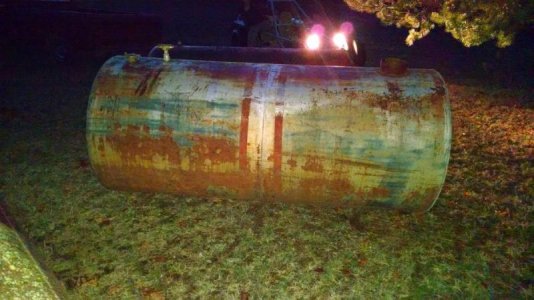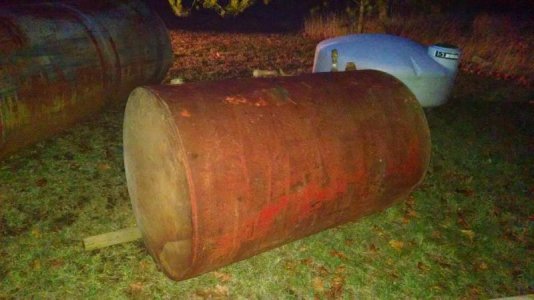There is no such thing as too big, it just means you may want doors on both sides and or sliding grates for easier access.
As long as it is thick enough and plain steel it will work. You can also make a smoker with sheet steel, it does not need to be round or a former propane tank. The reason for the use of propane tanks is they can sometimes be had cheap.
Beware of online calculators and certain individuals on other forums who promote certain formulas for design. Every one I have seen is "wrong" in the sense that they use inputs that are at best a poor proxy for what a truly engineered design would require. They generally work within a certain size range, but if you are using an unusual shape and size tank, an eyeball test and common sense will be just as accurate or possibly much better. In particular, the Feldon calculator that works off volumes can give some pretty absurd results. The important driving factor is going to be BTU loss which is based on surface area, material and R value which are not even inputs to the model. A larger, wider cook chamber can have a surface area to volume ratio that is less than half of a smaller unit, and the calculator will ignore this and suggest a firebox and opening sizes that are double or more than necessary. in some cases much more.


